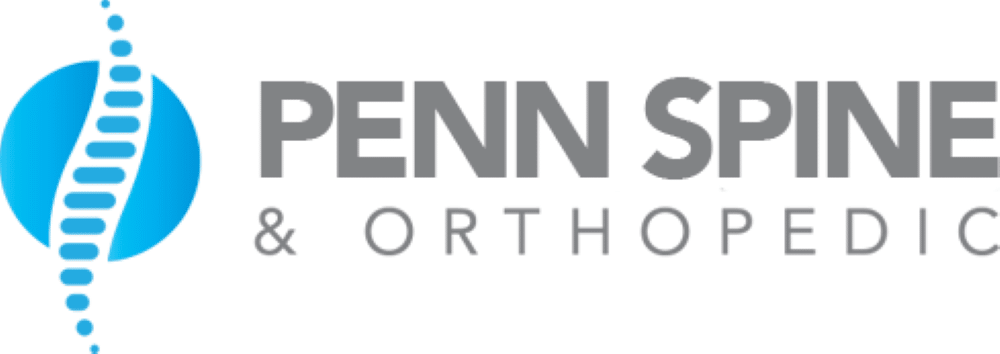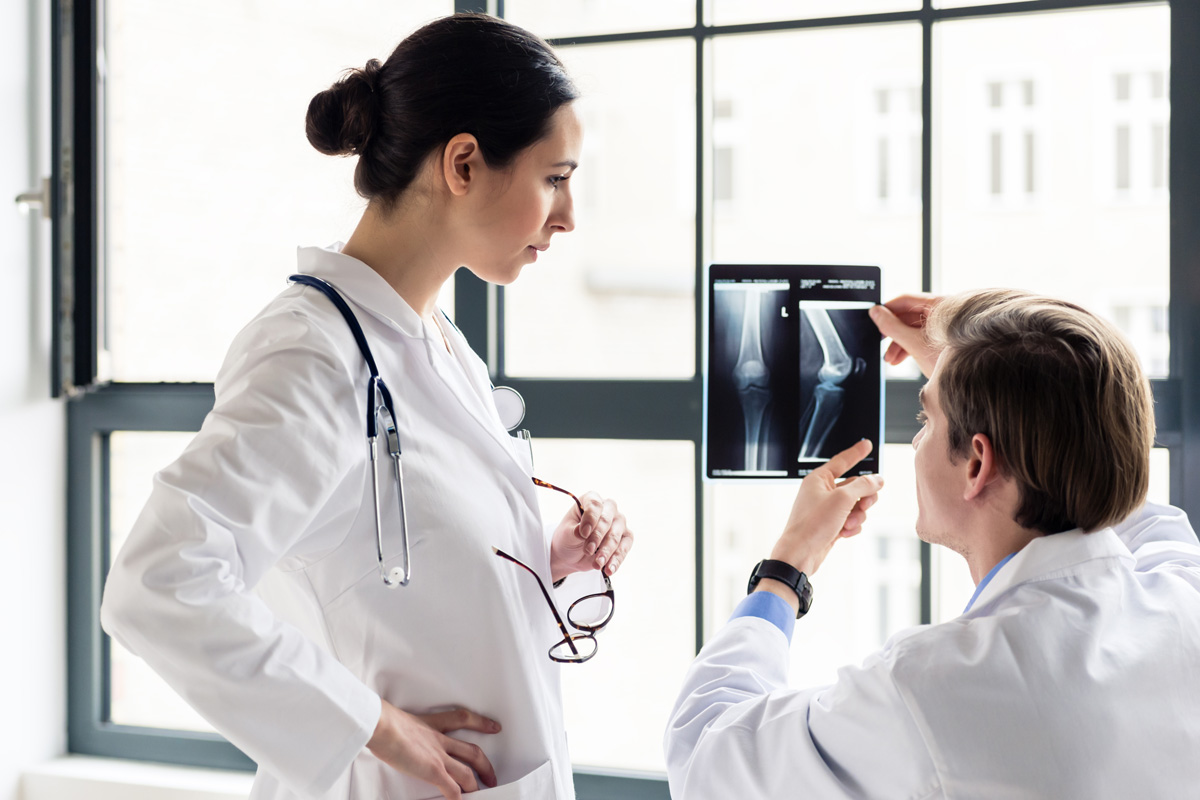Orthopedics, a medical specialty that focuses on the diagnosis, correction, prevention, and treatment of patients with skeletal deformities, is a field that is both fascinating and complex. This specialty addresses disorders that involve the body’s musculoskeletal system, which allows you to move, work, and be active. As we explore the depth of orthopedics, we will touch upon its history, common conditions, diagnosis methods, and future trends. This exploration will provide an insightful overview of orthopedics, and hopefully, induce a curiosity to know more about this vital medical specialty.
Defining Orthopedics
To understand the intricacies of the medical field, one must first define Orthopedics, a specialized branch dedicated to the diagnosis, treatment, and prevention of disorders related to the body’s musculoskeletal system. This system comprises the bones, joints, ligaments, tendons, muscles, and nerves that allow humans to move, work, and be active.
Orthopedic education trains medical professionals to manage patients’ needs from surgery to rehabilitation. It involves a complex curriculum of medical knowledge and practical skills, focusing on areas such as sports injuries, trauma, pediatric orthopedics, and joint replacement. The education of an orthopedic surgeon includes a five-year residency program after finishing medical school, with an optional additional year for a fellowship in a sub-specialty.
Orthopedic innovations in technology and methodology have significantly improved patient outcomes. Advancements in surgical techniques, such as minimally invasive surgery, and the use of robotic-assisted procedures, have resulted in less pain and quicker recovery times for patients. In terms of prosthetics, new materials and designs are providing better functionality and durability. Concurrently, developments in imaging technology have greatly enhanced the ability to diagnose and treat musculoskeletal conditions. Orthopedics, therefore, remains a dynamic and evolving field in medicine.
History of Orthopedics
The journey of orthopedics is a fascinating exploration that spans from ancient practices to the advanced procedures of the modern age. Beginning with rudimentary methods employed in early civilizations, the field has evolved significantly, particularly during the Middle Ages, when key advancements were made. As we progress into the discussion of modern orthopedics, the remarkable transformations and improvements in techniques, technology, and patient care will become evident.
Ancient Orthopedic Practices
Delving into the annals of medical history, one finds that orthopedic practices date back several millennia, with early civilizations having their own unique methods for treating bone injuries and muscular disorders.
- Orthopedic symbolism was prevalent in ancient cultures, with depictions of splints and braces found in Egyptian hieroglyphics and Grecian urns.
- The use of ancient prosthetics is well documented, with artifacts like the Roman Capua Leg and Egyptian wooden toes evidencing this early form of orthopedic intervention.
- Primitive splinting and traction techniques were used by ancient civilizations, for example, the Ancient Egyptians and Greeks, to treat fractures and dislocations.
These practices laid a rudimentary foundation for modern orthopedics, demonstrating the enduring human quest to understand and correct musculoskeletal disorders.
Orthopedics in Middle Ages
Transitioning into the Middle Ages, orthopedic practices underwent significant evolution, with advancements largely driven by the exigencies of war and increased understanding of human anatomy. The development and use of Medieval surgical tools, such as scalpels, forceps, and bone saws, allowed for more precise surgical interventions. In contrast to the rudimentary methods of the ancient period, these tools enabled physicians to perform complex procedures, like setting fractured bones and amputating limbs. Middle Ages rehabilitation methods also marked a leap forward. Physical therapy, massage, and the use of splints gained prominence, emphasizing the importance of post-operative care. The approach to orthopedics during this era laid the groundwork for the eventual emergence of orthopedics as a distinct medical specialty.
Modern Orthopedics Evolution
As the Middle Ages gave way to the Renaissance and subsequent centuries, orthopedics experienced a significant transformation with the advent of scientific discovery and technological innovation. Modern orthopedics evolved rapidly, shaped by advances in orthopedic technology, and fueled by rigorous orthopedic research.
This transformation was characterized by:
* The development of novel surgical techniques, which allowed for more precise and less invasive procedures.
* The creation of advanced prosthetics and orthotics, enhancing mobility and quality of life for patients.
* The pioneering use of imaging technologies like X-rays and MRI, revolutionizing diagnostic capabilities.
These advances have not only redefined orthopedic practice but also expanded its potential, promising better patient outcomes and fostering a more profound understanding of musculoskeletal health.
The Musculoskeletal System
The musculoskeletal system, a central focus in orthopedics, warrants detailed examination due to its integral role in human motion and function. This complex system is composed of bones providing structural support, muscles enabling movement, and joints facilitating flexibility. An in-depth understanding of these components is essential for recognizing and addressing musculoskeletal health and disease.
Understanding Bone Structure
Delving into the intricacies of the musculoskeletal system, one must first comprehend the complex structure of bones and their pivotal role in our bodily functions. Each bone is a marvel of nature, with its composition and structure largely determined by skeletal genetics. This genetic blueprint governs not only the shape and size of our bones, but also their density. Bone density is crucial as it influences the strength of our bones and their resistance to fractures.
To understand better, consider the following key concepts:
– Bone density: It refers to the amount of bone mineral in bone tissue, providing insight into bone health.
– Skeletal genetics: It studies the genetic factors influencing the development and function of the skeleton.
– Bone structure: It is the intricate arrangement of bone cells that allows for strength and flexibility.
Role of Muscles
In exploring the musculoskeletal system’s dynamics, it becomes evident that muscles play an indispensable role in orchestrating our body’s movements. Muscles, comprised of contractile tissue, are responsible for the active generation of force, facilitating locomotion and maintaining posture. However, the functional capacity of muscles is susceptible to changes over time due to the process of muscle aging. As we age, muscles experience a reduction in size, strength, and regenerative capacity. Yet, muscle regeneration is a remarkable feature of our musculoskeletal system, allowing for the repair of damaged tissues. In orthopedics, an understanding of muscle aging and regeneration is essential for developing therapeutic strategies aimed at preserving muscle function and mitigating age-related decline. The role of muscles is, therefore, pivotal within the study and practice of orthopedics.
Joint Functionality and Health
Just as muscles are integral to the functioning of the musculoskeletal system, so too are the joints, which provide crucial support and flexibility to enable a wide range of body movements. Joints facilitate weight-bearing and motion, allowing for activities like walking, running, and even simple tasks such as picking up an object.
- Joint diseases such as osteoarthritis can impede these essential functions, causing pain, stiffness, and decreased mobility.
- Effective arthritis management includes a combination of medication, physical therapy, and in some cases, surgical intervention.
- Regular exercise, a balanced diet, and maintaining a healthy weight are crucial for optimal joint health and can aid in preventing or slowing the progression of joint diseases.
Understanding joint functionality and health is fundamental in orthopedics, contributing to the overall well-being and quality of life of patients.
Common Orthopedic Conditions
Frequently encountered in the field of orthopedics, a variety of conditions such as arthritis, osteoporosis, and fractures can significantly affect the musculoskeletal system, warranting specialized medical attention. These conditions can cause debilitating pain, limit mobility, and deteriorate the quality of life.
Arthritis, characterized by inflammation of the joints, is a common orthopedic condition, often resulting in significant pain and disability. Modern orthopedic technology advancements have led to the development of novel therapeutic approaches to manage this condition, including minimally invasive surgeries and custom-fit joint implants.
Osteoporosis, a disease that weakens the bones making them prone to fractures, is another prevalent orthopedic condition. It is often silent until a fracture occurs, typically in the hip, spine, or wrist.
Fractures, a break in the bone, is one of the most common reasons for orthopedic consultation. Joint replacement innovations have greatly improved the outcomes for patients with severe fractures, especially in the hip and knee, leading to better postoperative function and improved quality of life.

Orthopedic Diagnosis Methods
How does one accurately diagnose orthopedic conditions such as arthritis, osteoporosis, and fractures? The answer lies in an array of sophisticated diagnostic methods that have evolved over time. These methods leverage advancements in imaging techniques and prosthetic technology to give doctors a clear picture of the patient’s condition.
Key methods in orthopedic diagnosis include:
- Imaging techniques: This is a broad category that includes X-rays, MRI scans, CT scans, and ultrasounds. These techniques provide a detailed image of the bones, muscles, and ligaments, helping doctors identify issues such as fractures, deformities, and degenerative conditions.
- Physical Examination: A hands-on approach that allows doctors to assess pain, swelling, range of motion, and other physical signs of orthopedic conditions.
- Lab Tests: These include blood tests, joint fluid analysis, and bone density tests, which can aid in diagnosing conditions like arthritis and osteoporosis.
These diagnostic tools, complemented by prosthetic advancements, have revolutionized orthopedic medicine. They not only facilitate precise diagnoses but also guide treatment plans, thus ensuring patients receive the most effective care possible. However, the choice of diagnostic method depends on the specific symptoms and condition of each patient.
Orthopedic Treatment Approaches
Once an accurate diagnosis of an orthopedic condition is achieved, a range of treatment approaches, tailored to the specific needs and condition of each patient, can be deployed to manage pain, repair injuries, and restore functionality. With the advent of orthopedic robotics, surgical procedures have become more precise, leading to improved patient outcomes. These robotic systems aid in preoperative planning and allow surgeons to perform complex procedures with enhanced accuracy.
In addition to surgical interventions, non-surgical treatments like physiotherapy and medication are also integral to orthopedic care. They help manage symptoms and improve mobility, thereby enhancing the quality of life for patients with chronic orthopedic conditions.
The field of orthopedics has also witnessed significant prosthetics advancements. Prosthetics are now designed to mimic the natural movement of limbs, offering a greater degree of mobility and comfort to patients. This is especially beneficial for amputees or individuals with severe limb deformities.
Orthopedic treatment approaches are continually evolving, with a focus on minimally invasive techniques and rapid recovery protocols. The ultimate goal is to restore the patient’s mobility and function, reducing pain and improving their overall quality of life.
Role of an Orthopedic Surgeon
In the realm of orthopedic care, the role of an orthopedic surgeon is pivotal, as they possess the expertise to diagnose, treat, and manage musculoskeletal disorders through both surgical and non-surgical means. This role is multifaceted and carries significant responsibility, with the surgeon’s lifestyle often reflecting the demanding nature of their profession.
Orthopedic surgeons utilise a range of surgical instruments to perform procedures, including scalpels, forceps, and specialized tools for bone manipulation. The proficient use of these instruments is essential for successful patient outcomes, with surgeons often mastering their use over years of rigorous training.
The role of an orthopedic surgeon involves:
– Diagnosing and treating a wide array of musculoskeletal conditions
– Performing surgical procedures using a variety of surgical instruments
– Adapting to a demanding surgeon’s lifestyle, often requiring long hours and a high degree of physical and mental resilience
Orthopedic Specializations
Orthopedic medicine encompasses a broad range of specializations, each focusing on different aspects of musculoskeletal disorders. These include sports medicine, where the emphasis is on injuries related to athletic activities, pediatric orthopedics which concentrates on musculoskeletal issues in children, and spinal surgery, a field that deals with disorders of the spine. Each of these specializations require additional training and expertise beyond general orthopedics, offering targeted treatments for specific patient populations.
Sports Medicine Specialization
Delving into the realm of sports medicine, a specialized branch of orthopedics, physicians focus on the prevention, diagnosis, and treatment of injuries related to sports and exercise. Sports medicine doctors have a pivotal role in Injury Prevention and Athlete Rehabilitation, addressing conditions that can occur from physical activity in people of all ages.
- Injury Prevention: Emphasizing proper training and sports techniques to prevent injuries. This includes educating athletes on proper equipment use, strength training, and conditioning.
- Diagnosis: Utilizing modern diagnostic tools to identify the type and extent of injuries. This enables tailored treatment plans for each individual.
- Athlete Rehabilitation: Implementing comprehensive rehabilitation programs to restore functionality, reduce pain, and prevent disability. This stage ensures the athlete can return to their sport safely and efficiently.
Pediatric Orthopedic Focus
Focusing on the youngest patients, pediatric orthopedics is a crucial specialization that deals with the diagnosis, management, and treatment of musculoskeletal problems in children. This field is particularly essential due to the dynamic nature of a child’s growing body. Growth Plate Injuries, for example, can disrupt normal development, leading to limb length discrepancies or angular deformities. Skilled pediatric orthopedists are adept at identifying and treating these conditions to optimize growth potential and functionality. The specialization also addresses Congenital Deformities, which are musculoskeletal anomalies present at birth. These can range from minor foot deformities to complex hip conditions requiring intricate surgical interventions. By providing expert care, pediatric orthopedists play a significant role in ensuring a child’s healthy growth and development.
Spinal Surgery Expertise
Mastering the art of spinal surgery, orthopedic surgeons not only relieve debilitating pain but also restore mobility and improve the quality of life for patients suffering from a broad spectrum of spinal conditions. These medical experts have specialized training in treating a varied range of spinal disorders including but not limited to:
- Degenerative disc disease: A condition that can cause severe and chronic neck or lower back pain.
- Spinal fusion alternatives: Innovative procedures that provide viable options to the traditional spinal fusion.
- Spinal deformities: Conditions such as scoliosis and kyphosis that can severely affect the individual’s posture and mobility.
Their proficiency in diagnosing and implementing effective treatment plans significantly enhances the patient’s health outcomes and overall well-being.
Non-Surgical Orthopedic Solutions
In the realm of orthopedics, non-surgical solutions offer a diverse array of effective treatments for patients seeking relief from musculoskeletal conditions without the invasiveness of surgery. These non-invasive methods, often categorized under alternative therapies and pain management, are an integral part of comprehensive orthopedic care and are tailored to the individual patient’s needs and lifestyle.
Alternative therapies may include techniques such as acupuncture, clinical hypnosis, and biofeedback, which aim to manage pain and improve function. These methods can offer significant relief for conditions like chronic back pain, osteoarthritis, and rheumatoid arthritis. On the other hand, pain management strategies primarily revolve around medication, nerve blocks, and injections. These are designed to provide immediate relief from acute pain, control chronic pain, and improve the overall quality of life.
Non-surgical orthopedic solutions often serve as the first line of treatment before considering surgical interventions. They offer a less invasive, holistic approach, focusing not just on the physical condition, but also on the psychological aspects of pain and disability. The choice of treatment is typically based on an in-depth evaluation of the patient’s condition, their pain levels, and their personal and medical histories.

Physical Therapy in Orthopedics
Undeniably, an essential part of non-surgical orthopedic care is physical therapy, a discipline that uses targeted exercises and movement strategies to help patients regain or improve their physical abilities. This approach can efficiently address a variety of orthopedic conditions, including arthritis, fractures, and musculoskeletal injuries.
Physical therapy in orthopedics primarily revolves around three central components:
- Therapeutic exercises: These are specific movements designed to restore and enhance joint function, muscle strength, and flexibility. They are tailored individually to each patient’s needs and capabilities.
- Manual therapy: This involves hands-on techniques applied by the therapist to improve joint mobility, decrease pain, and enhance the patient’s movement pattern.
- Prosthetic rehabilitation: This is a specialized area within orthopedic physical therapy that focuses on helping patients who have undergone limb amputation. The goal is to return patients to a high level of function and independence in their daily activities.
Orthopedics and Sports Medicine
The field of Orthopedics intersects significantly with Sports Medicine, a specialty that concentrates on the prevention, diagnosis, and treatment of injuries related to athletic activities. The two disciplines work hand-in-hand to ensure athletes’ optimal performance and minimize their risk of musculoskeletal injuries.
Orthopedic surgeons specializing in sports medicine employ a comprehensive approach that extends beyond surgery. They utilize injury prevention strategies, including conditioning and strength training programs, to reduce the incidence of sports-related injuries. These strategies are individualized to meet the specific needs and demands of each sport and athlete.
Moreover, the management of athlete nutritional needs is a crucial aspect of sports medicine. Adequate nutrition not only fuels athletic performance, but also plays a key role in injury prevention, recovery, and rehabilitation. Orthopedic sports medicine specialists often collaborate with dieticians to design tailored nutritional plans that cater to the unique requirements of athletes, considering factors such as the type of sport, training load, and individual health status.
In this collaboration between orthopedics and sports medicine, the goal is not only to treat injuries but also to promote the overall health and well-being of athletes, enabling them to reach their peak performance.
Future Trends in Orthopedics
Navigating the landscape of orthopedics, one can anticipate a future marked by innovative trends and advancements set to revolutionize the field. Expected developments are poised to improve patient outcomes, reduce recovery times, and enhance the overall quality of orthopedic care.
Two key trends in particular – robotic orthopedics and telemedicine advancements – are at the forefront of this exciting phase of transformation.
Robotic orthopedics is an emerging technology that promises to enhance surgical precision and patient outcomes. Telemedicine advancements are reshaping healthcare delivery, enabling remote consultations and follow-ups, thereby increasing accessibility to orthopedic care.
Here are a few more innovations to watch for:
– 3D Printing: This technology is aiding in the creation of custom implants, prosthetics, and surgical tools, offering an unprecedented level of personalization in orthopedic care.
– Biomaterials: The use of advanced biomaterials for implants is improving patient compatibility and longevity of orthopedic solutions.
– Regenerative Medicine: Techniques such as stem cell therapy and tissue engineering are paving the way for repairing and regenerating damaged tissues.
These trends are not mere possibilities but concrete indicators of a future where orthopedic care is more precise, personalized, and accessible.
Frequently Asked Questions
What Are the Academic Qualifications and Training Required to Become an Orthopedic Surgeon?
To become an orthopedic surgeon, one requires a bachelor’s degree, medical degree, residency in orthopedic surgery, and often a fellowship in orthopedic specializations. This rigorous training impacts the surgeon’s work-life balance significantly.
How Does Age Affect the Likelihood of Needing Orthopedic Treatment?
Age significantly influences the probability of requiring orthopedic treatment. As individuals age, they are more prone to age-related injuries and degenerative diseases, reducing senior fitness and increasing the need for orthopedic interventions and care.
How Much Does the Average Orthopedic Procedure Cost?
The cost of an average orthopedic procedure varies significantly and is determined by factors such as insurance coverage, the complexity of the operation, and the location where it is performed. It’s advisable to consult healthcare providers for precise estimates.
What Is the Recovery Process Like After Orthopedic Surgery?
The recovery process after orthopedic surgery involves diligent post-operative nutrition and regular physiotherapy to promote healing, reduce pain and regain mobility. Each patient’s recovery timeline may vary based on the specific procedure and personal health condition.
How Can Orthopedic Issues Be Prevented or Minimized?
Orthopedic issues can be prevented or minimized through regular exercise, which benefits musculoskeletal health, and posture correction, which reduces strain on joints. Additionally, maintaining a healthy weight can alleviate pressure on weight-bearing joints.

